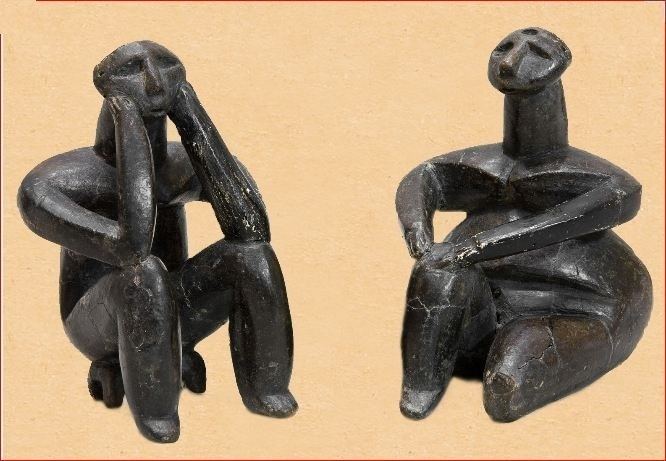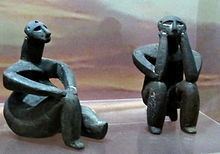 | ||
The Hamangia culture is a Late Neolithic archaeological culture of Dobruja (Romania and Bulgaria) between the Danube and the Black Sea and Muntenia in the south. It is named after the site of Baia-Hamangia, discovered in 1952 along Golovița Lake.
Contents

Genesis and successor

The Hamangia culture began around 5250/5200 BC and lasted until around 4550/4500 BC. It was absorbed by the expanding Boian culture in its transition towards the Gumelnitsa. Its cultural links with Anatolia suggest that it was the result of a settlement by people from Anatolia, unlike the neighbouring cultures, which appear descended from earlier Neolithic settlement.
Pottery
Painted vessels with complex geometrical patterns based on spiral-motifs are typical. The shapes include pots and wide bowls.
Figurines

Pottery figurines are normally extremely stylized and show standing naked faceless women with emphasized breasts and buttocks. Two figurines known as “The Thinker” and “The Sitting woman” (see photos) are considered masterpieces of Neolithic art.
Settlements

Settlements consist of rectangular houses with one or two rooms, built of wattle and daub, sometimes with stone foundations (Durankulak). They are normally arranged on a rectangular grid and may form small tells. Settlements are located along the coast, at the coast of lakes, on the lower and middle river-terraces, sometimes in caves.
Inhumation

Crouched or extended inhumation in cemeteries. Grave-gifts tend to be without pottery in Hamangia I. Grave-gifts include flint, worked shells, bone tools and shell-ornaments.
